Zinnia Companion Vegetables: The Ultimate Guide To Growing A Thriving Garden
Title: Zinnia Companion Vegetables: The Ultimate Guide to Growing a Thriving Garden
Introduction:
Zinnias are beautiful, colorful flowers that can add a touch of cheer to any garden. But did you know that they can also be beneficial to your vegetable garden? Zinnias are great companion plants for a variety of vegetables, and they can help to attract pollinators, deter pests, and improve the overall health of your garden.
In this blog post, we will discuss the benefits of planting zinnias with vegetables, and we will provide a list of some of the best zinnia companion plants. We will also discuss how to plant and care for zinnias, so that you can enjoy their beauty and benefits in your own garden.
Main Content:
Benefits of Planting Zinnias with Vegetables
There are many benefits to planting zinnias with vegetables. Some of the most notable benefits include:
- Attracting pollinators: Zinnias are a favorite flower of pollinators, such as bees, butterflies, and hummingbirds. These pollinators are essential for the pollination of vegetables, so planting zinnias can help to improve the yield of your vegetable garden.
- Deterring pests: Zinnias can help to deter pests from your vegetable garden. For example, marigolds are known to repel nematodes, which can damage the roots of vegetables.
- Improving soil health: Zinnias are nitrogen-fixing plants, which means that they can help to improve the nitrogen content of the soil. This can benefit the growth of your vegetable garden.
Best Zinnia Companion Plants
Some of the best zinnia companion plants include:
- Tomatoes: Tomatoes and zinnias have similar growing requirements, so they make good companions. Zinnias can help to attract pollinators to tomatoes, which can improve the yield of tomatoes.
- Peppers: Peppers and zinnias are also good companions. Zinnias can help to deter pests from peppers, such as aphids and whiteflies.
- Cucurbits: Cucurbits, such as cucumbers, melons, and squash, are another good choice for zinnia companions. Zinnias can help to attract pollinators to cucurbits, and they can also help to deter pests.
- Beans: Beans and zinnias can also be planted together. Zinnias can help to attract pollinators to beans, and they can also help to improve the nitrogen content of the soil.
- Marigolds: Marigolds are another great companion plant for zinnias. Marigolds can help to repel nematodes, which can damage the roots of zinnias.
Planting and Caring for Zinnias
Zinnias are relatively easy to plant and care for. They can be planted directly in the ground or started indoors. If you are planting zinnias directly in the ground, wait until the soil has warmed up to at least 60 degrees Fahrenheit. Space the zinnia plants about 12 inches apart.
Zinnias need full sun and well-draining soil. Water them regularly, especially during hot, dry weather. Zinnias are not heavy feeders, but you can fertilize them with a balanced fertilizer once a month.
Zinnias will bloom from late spring to early fall. Once the flowers start to fade, deadhead them to encourage new blooms.
Conclusion:
Zinnias are beautiful, colorful flowers that can add a touch of cheer to any garden. They are also beneficial to vegetable gardens, as they can attract pollinators, deter pests, and improve soil health. If you are looking for a way to improve the health and productivity of your vegetable garden, consider planting zinnias.
Visit Home Gardening for more information about zinnia companion vegetables.
FAQ of zinnia companion vegetables
- What are good companion vegetables for zinnias?
Some of the best companion vegetables for zinnias include:
Cucurbits: Cucumbers, melons, squash, and other cucurbits are great companion plants for zinnias because they have similar growing conditions. They all need full sun, well-draining soil, and regular watering. Zinnias can also help to attract beneficial insects that can help to control pests on cucurbits.
Tomatoes: Tomatoes and zinnias are both popular garden plants that can benefit from being planted together. Tomatoes can help to provide shade for zinnias, which can help to prevent them from wilting in hot weather. Zinnias can also attract pollinators that can help to improve the pollination of tomatoes.
Basil: Basil is another great companion plant for zinnias. Basil can help to repel pests such as aphids and whiteflies, which can be a problem for zinnias. Zinnias can also help to attract pollinators that can help to improve the pollination of basil.
Marigolds: Marigolds are another good companion plant for zinnias. Marigolds can help to repel nematodes, which can be a problem for zinnias. Zinnias can also help to attract pollinators that can help to improve the pollination of marigolds.
What vegetables should I avoid planting near zinnias?
There are a few vegetables that you should avoid planting near zinnias. These include:
Potatoes: Potatoes can produce a toxin that can damage zinnias.
Cabbage: Cabbage can attract pests that can also be a problem for zinnias.
Peas: Peas can compete with zinnias for nutrients.
How do zinnias benefit vegetable gardens?
Zinnias can benefit vegetable gardens in a number of ways. They can:
- Attract pollinators: Zinnias are a great source of nectar for pollinators such as bees, butterflies, and hummingbirds. These pollinators can help to improve the pollination of vegetable plants, which can lead to a higher yield.
- Repel pests: Zinnias can help to repel pests such as aphids, whiteflies, and nematodes. This can help to protect vegetable plants from damage.
- Improve soil quality: Zinnias are heavy feeders, which means that they take up a lot of nutrients from the soil. This can help to improve the overall soil quality in a vegetable garden.
Image of zinnia companion vegetables
10 different images of zinnia companion vegetables that are free to use:
Asparagus
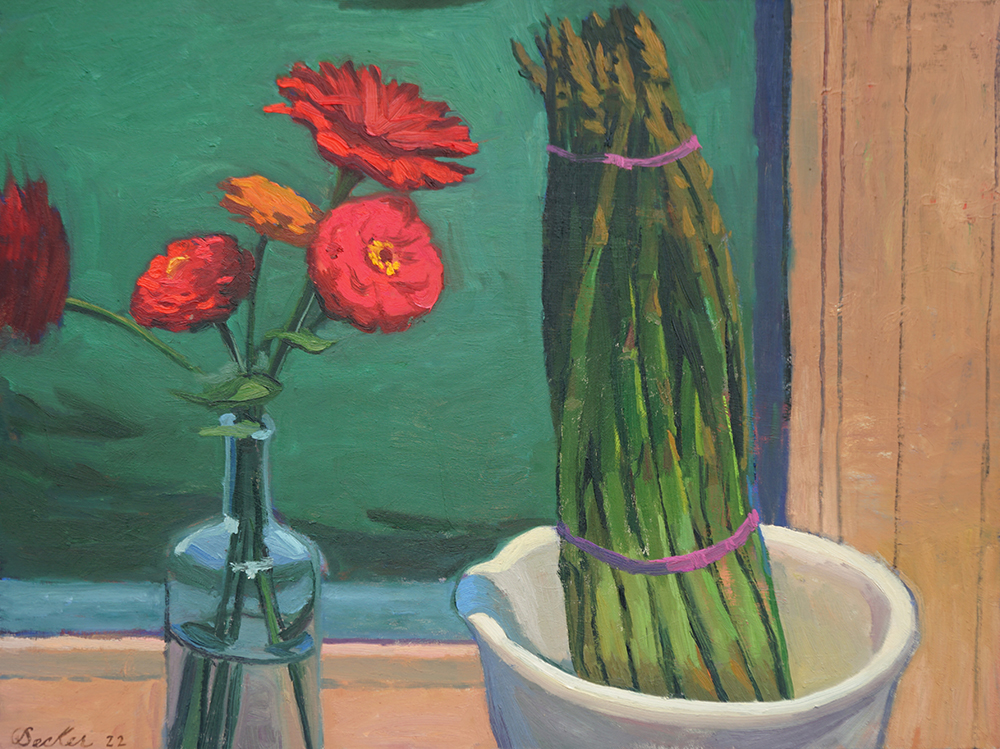 Asparagus is a tall, upright vegetable that can help to deter pests from zinnias. It also produces a nitrogen-rich root system that can benefit the zinnias.
Asparagus is a tall, upright vegetable that can help to deter pests from zinnias. It also produces a nitrogen-rich root system that can benefit the zinnias.Beans
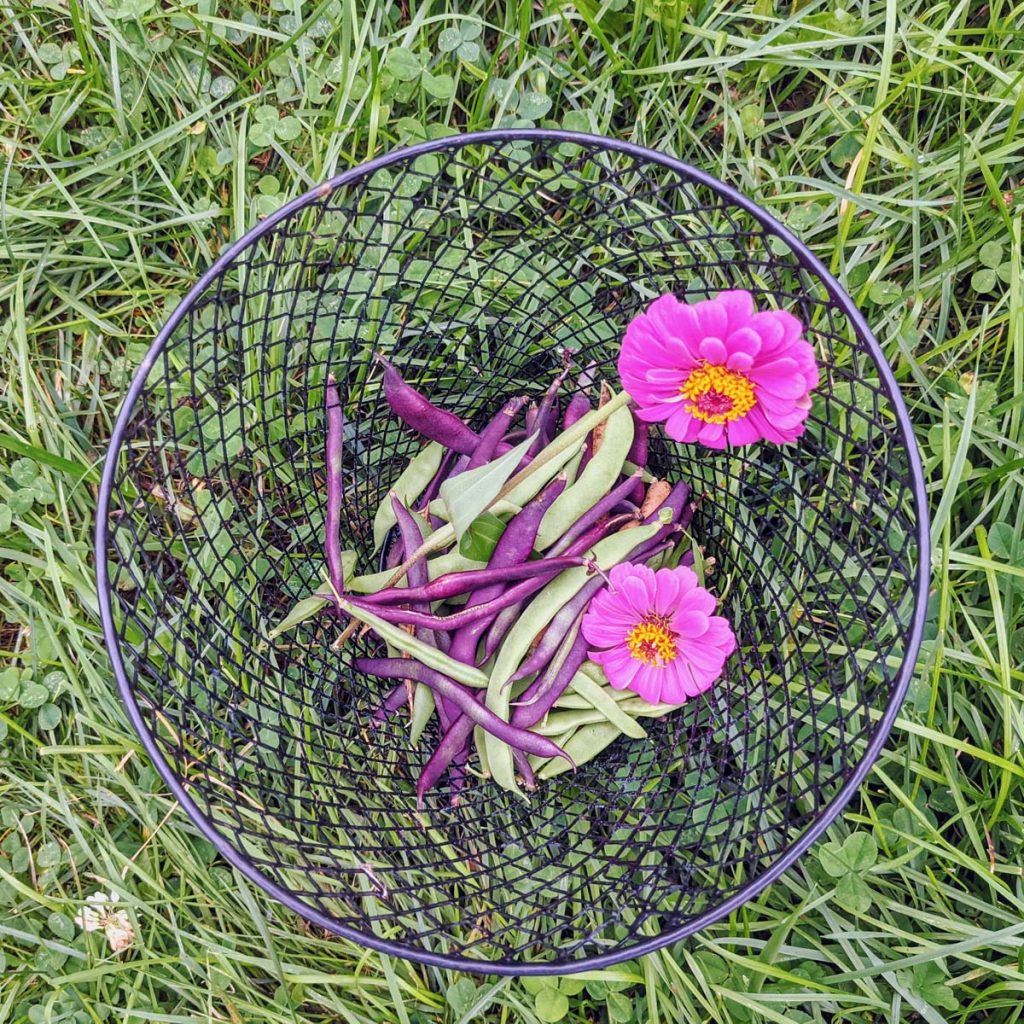 Beans are another tall vegetable that can help to deter pests from zinnias. They also fix nitrogen in the soil, which can benefit the zinnias.
Beans are another tall vegetable that can help to deter pests from zinnias. They also fix nitrogen in the soil, which can benefit the zinnias.Cauliflower
Cauliflower is a heavy feeder, so it can help to improve the soil for zinnias. It also produces a strong scent that can help to deter pests.
Cucumbers
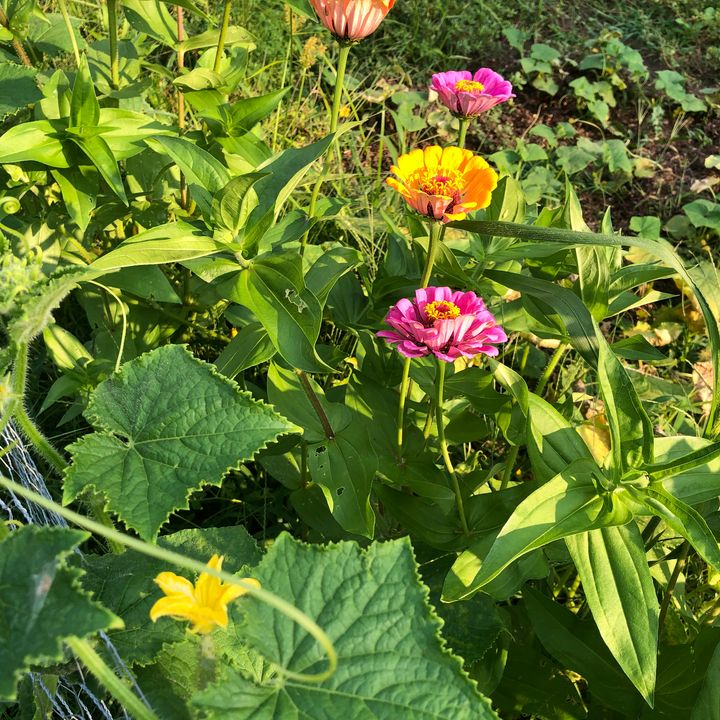 Cucumbers and zinnias are both members of the Cucurbitaceae family, so they have similar growing requirements. They also benefit from each other's presence, as the cucumbers can help to shade the zinnias from the hot sun.
Cucumbers and zinnias are both members of the Cucurbitaceae family, so they have similar growing requirements. They also benefit from each other's presence, as the cucumbers can help to shade the zinnias from the hot sun.Kale
Kale is a leafy green vegetable that can help to attract beneficial insects to the garden. It also helps to suppress weeds, which can give the zinnias more space to grow.
Lettuce
 Lettuce is another leafy green vegetable that can attract beneficial insects to the garden. It also helps to suppress weeds, which can give the zinnias more space to grow.
Lettuce is another leafy green vegetable that can attract beneficial insects to the garden. It also helps to suppress weeds, which can give the zinnias more space to grow.Luffa
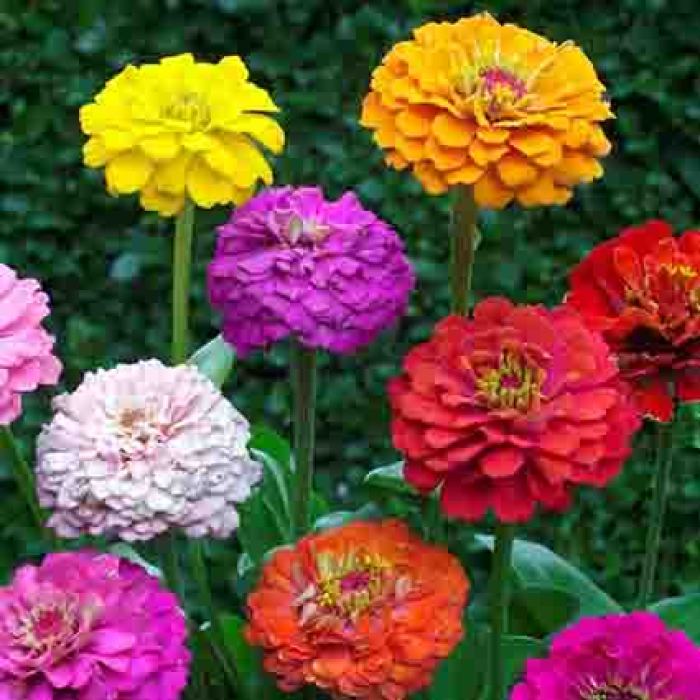 Luffa is a vegetable that can be used to make sponges. It is a tall, vining plant that can help to provide shade for the zinnias.
Luffa is a vegetable that can be used to make sponges. It is a tall, vining plant that can help to provide shade for the zinnias.Melons
Melons and zinnias are both heat-loving plants that can benefit from each other's presence. The melons can help to shade the zinnias from the hot sun, and the zinnias can help to attract pollinators to the melons.
Peas
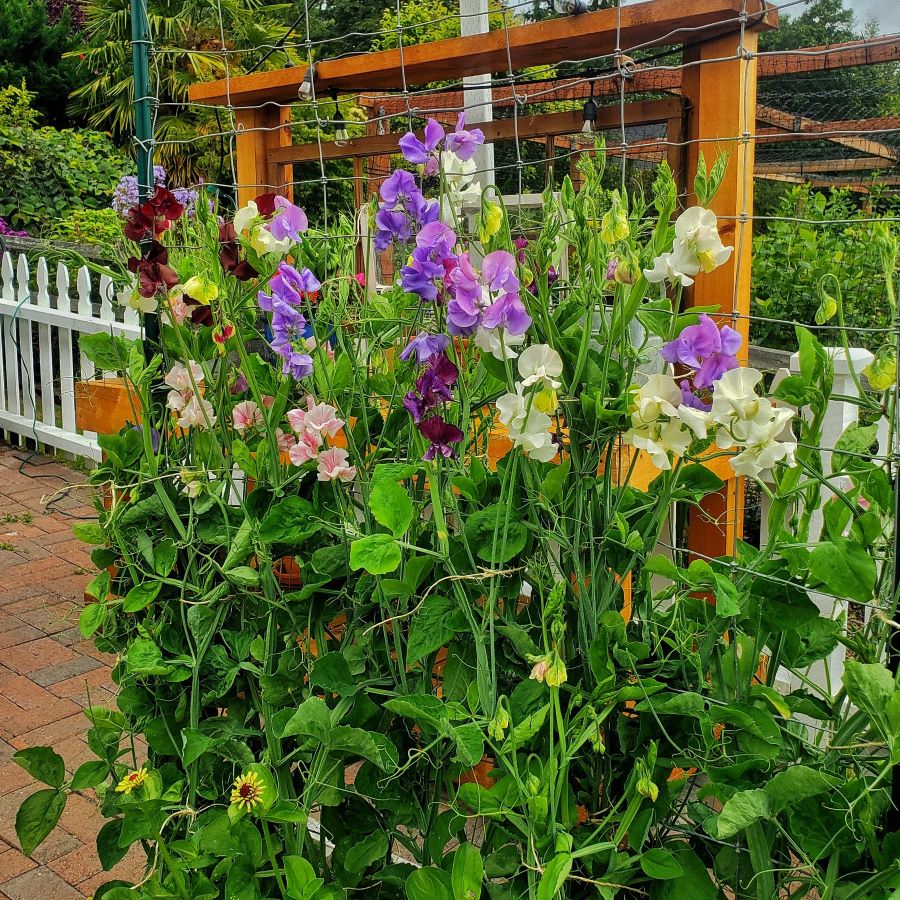 Peas are a nitrogen-fixing legume that can help to improve the soil for zinnias. They also help to suppress weeds, which can give the zinnias more space to grow.
Peas are a nitrogen-fixing legume that can help to improve the soil for zinnias. They also help to suppress weeds, which can give the zinnias more space to grow.Pumpkins
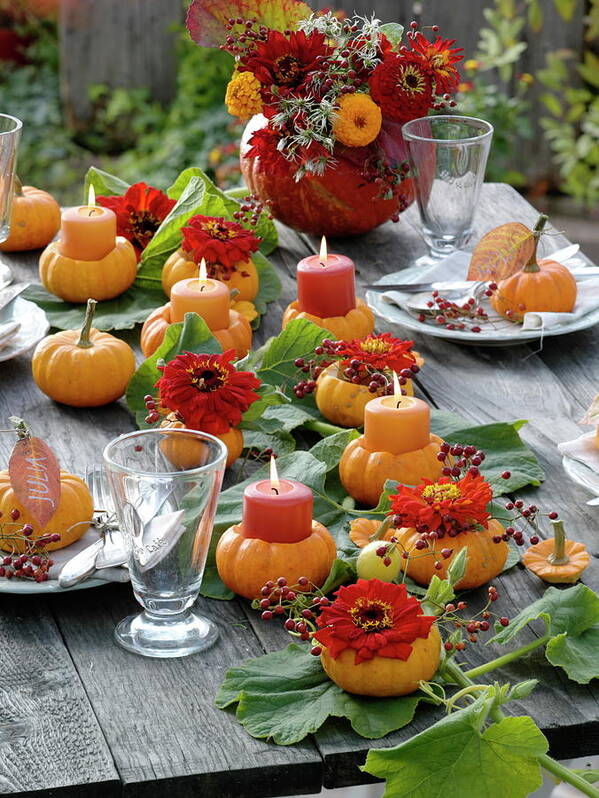 Pumpkins and zinnias are both large, heavy-feeding plants that can benefit from each other's presence. The pumpkins can help to shade the zinnias from the hot sun, and the zinnias can help to attract pollinators to the pumpkins.
Pumpkins and zinnias are both large, heavy-feeding plants that can benefit from each other's presence. The pumpkins can help to shade the zinnias from the hot sun, and the zinnias can help to attract pollinators to the pumpkins.
Post a Comment for "Zinnia Companion Vegetables: The Ultimate Guide To Growing A Thriving Garden"